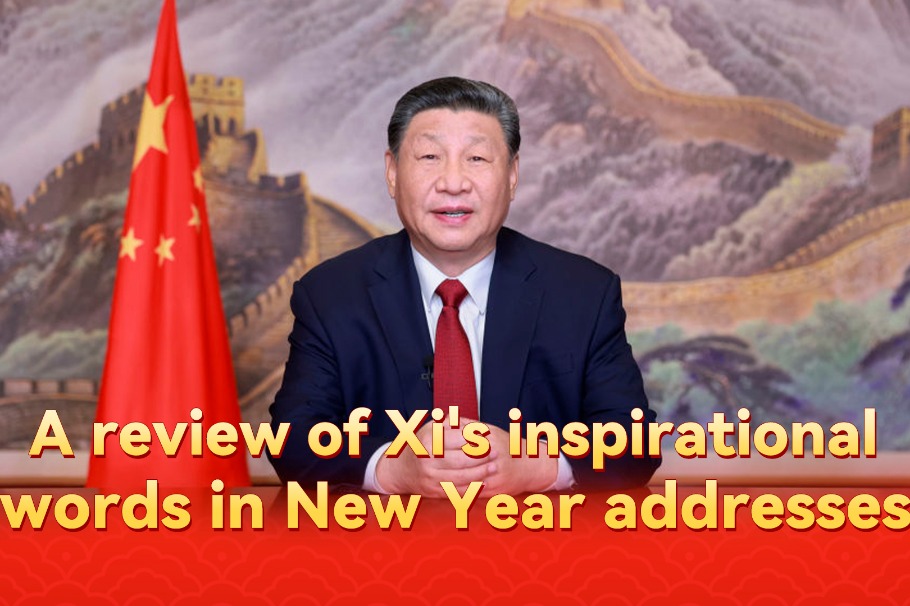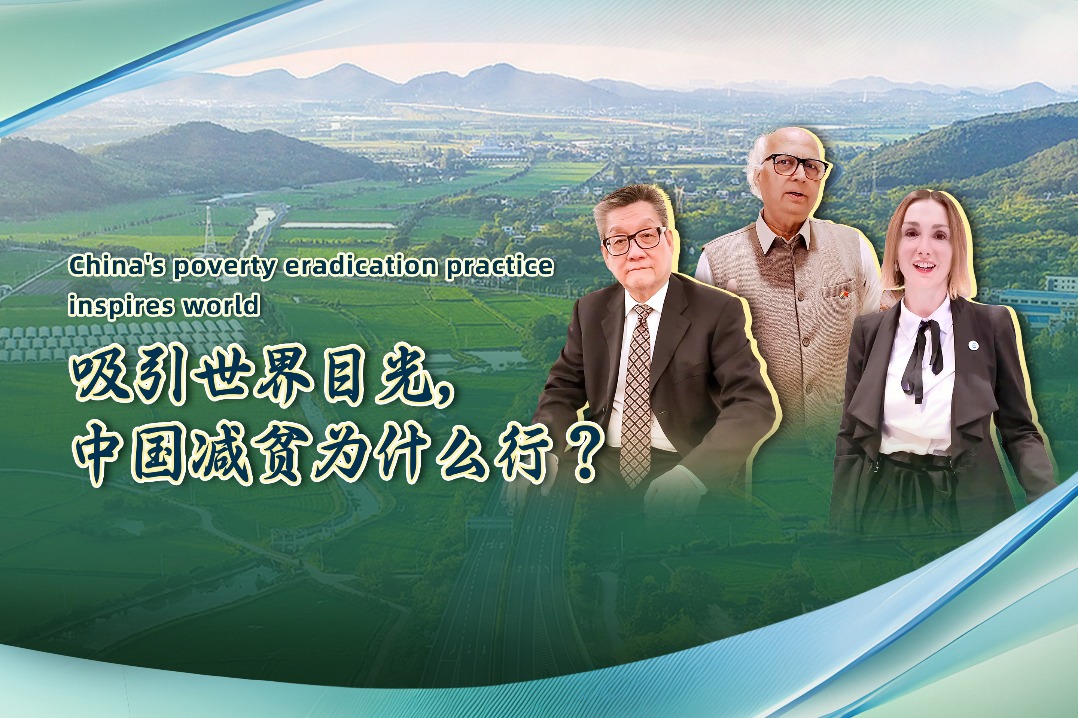Poverty alleviation power plan pays double dividends
By LIN BOQIANG | chinawatch.cn | Updated: 2019-12-06 10:18

One of the most remarkable achievements of China's reform and openingup has been poverty alleviation. Statistics show that at the end of 1978, some 770 million Chinese people were living in poverty. But the number fell to 16.6 million in rural areas by the end of 2018. In other words, in the four decades since the reform and opening-up policy was introduced, more than 700 million people have been pulled out of poverty.
In particular, after the 18th National Congress of the Communist Party of China in 2012, the Party and the government firmly resolved to alleviate poverty, and their dedicated efforts will ensure that all poor people in rural areas will be lifted out of poverty by 2020.
To achieve this goal, various departments and agencies have come up with plans covering education, medical treatment and health, transportation, employment and training.
Poverty alleviation methods have changed from the relief-reliant approach of developing agriculture and tapping natural resources to providing alternative livelihoods that center on comprehensive rural development.
Among all the poverty alleviation measures being followed, energy programs have become the most efficient way of reducing not only poverty but also carbon emissions.
Most of the poverty-stricken people are concentrated in China's western region and some remote mountainous areas, where the topography and poor communication facilities have been the stumbling blocks to development until now.
Since the regions are often endowed with abundant sunshine and water and other renewable sources, a poverty alleviation method driven by energy has become popular in these areas. Such measures entail efforts by energy companies to help disadvantaged regions eradicate poverty under government guidance, by distributing photovoltaic and biomass energies, and hydroelectric power.
In the last few years, as China's photovoltaic industry has developed at a fast pace, abundant sunshine and the low cost of energy distribution in rural areas makes them ideal for solar power generation.
This is in line with the "green economy" philosophy and could help better protect the environment while maximizing the utilization of new energy.
As for the low-cost small hydroelectric and biomass energy programs, those could boost industries in rural areas and increase farmers' incomes. Poverty alleviation driven by energy could also help upgrade the rural power grid and facilitate solar and hydroelectric power programs.
In 2018 alone, China invested $5.7 billion in upgrading the power grid in poverty-stricken rural areas. All villages except some in the Tibet autonomous region now have electricity, which has promoted the use of farming machines and boosted economic development.
With new energy replacing firewood, kitchen sanitation in impoverished areas has improved and farmers' incomes have increased. And as farmers no longer need to chop wood, forest destruction has been curbed leading to better environmental protection.
But in spite of these achievements, some issues still need to be addressed.
Some of the energy poverty alleviation projects are not sound and are poorly managed. The power stations in some remote, poverty-stricken areas are built and run by the residents themselves. Since the villagers lack expertise and experience, the stations often malfunction.
There are also problems like the lack of unified standards in site selection, design, installation and construction, outdated energy management practices and technologies, and improper operation. As a result, some equipment does not perform efficiently and even could become a burden.
Sometimes, it is the villagers' lack of motivation that limits efficiency. If the energy poverty alleviation model entails offering money and materials, those who are being helped may become dependent on them and not endeavor to learn new skills to increase their incomes.
If the poverty alleviation plan's target is the elderly and those with disabilities, their skill education and physical health limitations could hinder the success of the effort. Additional help will be needed.
Wind, solar, small hydroelectric and other renewable energy programs often require large investments in the initial stage and a relatively long time to recover the cost. But disadvantaged households usually do not have enough money for investment and are desperate for quick returns.
Also it is not possible to change people's lifestyle and perception of environmental protection in a short time. And the migration of young laborers from some areas could create a shortage of human resources in the impoverished areas.
If governments alone run the energy-driven poverty alleviation programs, the lack of other stakeholders' participation will likely result in unsatisfactory results.
In some areas with high concentration of ethnic minority groups, clean energy systems are mostly government-planned programs, which have suffered because of inadequate training and guidance and lack of equipment maintenance.
Also, some local governments only provide financial aid and preferential policies, but ignore regulation and supervision. The result could be inaction and delay. In some other areas, governments, eager to seek instant success, even support some improper programs.
In order to eliminate all abject poverty by 2020 and accelerate the building of a moderately prosperous society, China introduced the following new policies for energy-driven poverty alleviation in 2019:
Pilot photovoltaic-driven poverty alleviation programs in 50,000 impoverished villages that receive abundant sunshine. It helped the annual income of 2.8 million poor households rise by $425 each.
Not long ago, the Ministry of Finance released $16 billion in poverty alleviation funds and $804 million as renewable energy subsidy for 2020, to help mitigate the negative impact of lagging subsidies.
Based on experience, small hydroelectric power plants with an installed capacity of 2 million kilowatts have been built in rural areas, which could benefit 1 million households in 10,000 impoverished villages.
Thanks to the government's unremitting efforts, energy poverty alleviation projects have made remarkable achievements. But due to various constraints, the energy infrastructure of China's rural areas remains relatively weak, related services are at a low level and clean energy still needs to be developed.
Precision poverty alleviation has now entered a crucial stage, where we should make good plans, focus on industries' role in poverty eradication, speed up the transformation of the working model, and enhance the self-reliance of those being helped.
All participants should devote themselves wholeheartedly to the work so as to realize the target of fully eradicating poverty, including accelerating rural grid upgrading, developing sound renewable energy programs according to local requirements, forming greater synergy with relevant industries, and striving to create more opportunities for economic expansion through energy-driven poverty alleviation.
The author is dean of the China Institute for Studies in Energy Policy at Xiamen University.
























